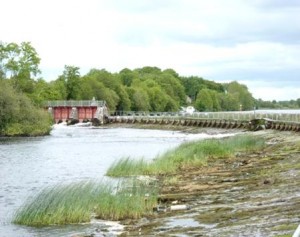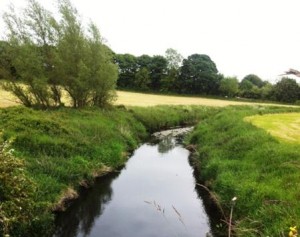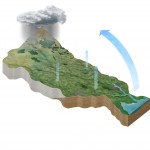Water is a precious resource, and is essential for all…
Hydromorphology: What is it?
Hydromorphology considers the physical character and water content of water bodies. Good hydromorphological conditions support aquatic ecosystems (i.e. hydromorphological elements such as water flow and substrate provide physical habitat for biota such as fish, invertebrates and aquatic macrophytes). While hydromorphological impacts are not as severe compared to other European countries, it is an area that requires more attention in Ireland.
As the second cycle of the Water Framework Directive approaches, an assessment is needed to identify hydromorphological pressures impacting Irish water bodies. Pressures can include abstraction, impoundment (i.e. dams and weirs), channelisation and embankments. My main role in the EPA Catchment Science and Management unit is to help develop a hydromorphological risk assessment approach for rivers, lakes, transitional and coastal water bodies.
The EPA approach to hydromorphological risk assessment
The risk assessment is a three stage approach with each stage screening water bodies in order to prioritise further investigation at the final stage.
- Preliminary Risk Screening: this will incorporate information on water bodies with known hydromorphological issues based on expert opinion, along with evaluating national monitoring data in order to identify any indications of other pressures other than eutrophication. This will help identify water quality issues that need to be addressed first; it is vital to tackle water quality pressures prior to implementing hydromorphological measures. These water bodies, along with water bodies with known impacts caused by hydromorphological pressures, will be given high priority for the next stage.
- Initial Hydromorphological Characterisation: this will involve a GIS based desktop assessment to identify the screened water bodies that may be impacted by various hydromorphological pressures.
- Further hydromorphological characterisation: this can include actions such as field assessments to finally assign a risk category to the water body. This will allow the identification of appropriate mitigation and rehabilitation measures. Screening water bodies throughout the process will allow for a streamlined focused approach.

In recent years, a lot of hydromorphological work has been carried out in Ireland. The OPW and IFI’s Environmental River Enhancement Programme (EREP) is a good example of this work. Existing hydromorphological information, such as EREP, needs to be built into the risk assessment. In addition, the approach will lead the way to building a comprehensive, standardised national hydromorphological dataset for future work. Worldwide, there is still a poor understanding of the quantitative links between hydromorphological degradation and ecological response. As eco-hydromorphology is constantly evolving, the approach will be reviewed as the science develops further.
Article by Emma Quinlan, EPA Catchments Unit

2020 Update – Dealing with physical damage to rivers: the Morphological Quality Index (MQI) index and restoration
On 17 and 18 June 2020 the EPA held its National Water Event as an online conference. The 2020 theme was ‘Restoring our waters’.
This presentation was given by Emma Quinlan and provides an update on the national hydromorphology work programme and the Morphological Quality Index.






